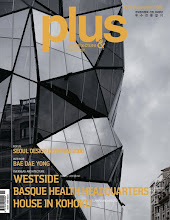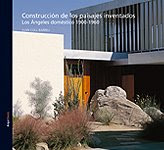Wednesday, December 18, 2013
Merry Christmas 2013 / Feliz Navidad 2013
At the end of 1971 John Lennon and Yoko Ono wrote and recorded in New York "Happy Xmas (War Is Over)". A music video was recut for the 2003 DVD "Lennon Legend: The Very Best of John Lennon". This version is composed of documentary footage from conflicts in various parts of the world since the 1970s up to the 21st century. It showed that the actuality of the song had increased. Despite everything, Lennon and Ono's song has been included on many Christmas compilations. With these two desires of peace on Earth and personal closeness we wish Merry Christmas to all our students, colleagues and friends. Happy Christmas 2013.
A finales de 1971 John Lennon y Yoko Ono escribieron y grabaron "Happy Xmas (War Is Over)" en Nueva York. El video musical fue montado para el DVD "Lennon Legend: The Very Best of John Lennon" de 2003. Era una versión compuesta a partir de filmaciones reales en diferentes conflictos del mundo desde los años 70 hasta el siglo XXI. Ponía de manifiesto que la actualidad de la canción no había hecho sino aumentar. A pesar de todo, la canción de Lennon y Ono ha sido repetidamente incluida en recopilaciones navideñas. Con estos dos viejos deseos de paz en la tierra y de cercanía personal felicitamos la Navidad a todos nuestros alumnos, colegas y amigos. Feliz Navidad 2013.
Sunday, December 15, 2013
Discussing about COLL-BARREU ARQUITECTOS in Warsaw / Hablar sobre COLL-BARREU ARQUITECTOS en Varsovia
The renewed city of Warsaw is our next European appointment. I expect to be there on February 4 2014 to discuss the recent projects of COLL-BARREU ARQUITECTOS. In the last edition, our work was the most dramatic and controversial in Congress, but fortunately this year Zaha Hadid is also invited.
La renovada ciudad de Varsovia es nuestra próxima cita europea. Preveo estar allí el 4 de febrero de 2014 para discutir sobre los últimos proyectos de COLL-BARREU ARQUITECTOS. En la pasada edición, nuestra obra fue la más dramática y polémica del congreso, pero afortunadamente este año también está invitada Zaha Hadid.
La renovada ciudad de Varsovia es nuestra próxima cita europea. Preveo estar allí el 4 de febrero de 2014 para discutir sobre los últimos proyectos de COLL-BARREU ARQUITECTOS. En la pasada edición, nuestra obra fue la más dramática y polémica del congreso, pero afortunadamente este año también está invitada Zaha Hadid.
LAB 4, Buffet for the Decade of Utopian Pragmatism (IV) Overfeeding / Bufé para la década del pragmatismo utópico (IV) Sobrealimentación
Some images from my lecture this week at LAB 4, "Buffet for the Decade of Utopian Pragmatism (IV) Overfeeding", also involved in the birth of pragmatic utopian projects at the end of the 20th Century. I have called "Overfeeding" the architecture of superoptimism, a series of unforgettable pieces focused on the solution. They configured without doubt one of the golden ages of contemporary design.
Algunas imágenes de mi conferencia de esta semana en LAB 4. "Bufé para la década del pragmatismo utópico (IV) sobrealimentación", comprometida también con el nacimiento de los proyectos utópicos pragmáticos del final del siglo XX. He llamado "sobrealimentación" a la arquitectura del superoptimismo, una serie de piezas inolvidables orientadas a la solución. Configuraron sin duda una de las edades de oro del diseño contemporáneo.
Wednesday, December 4, 2013
LAB 4, about The Science of Sleep / sobre La ciencia del sueño
The video is a commentary about the beautiful film "La science des rêves" by Michel Gondry (2006), recommended in our course LAB 4.
Some LAB 4 students asked me about my impression about Monster's Ball, one of the films recommended by our course. We realized that my vision was something different from the majority among those present. I promised them a personal explanation on some of the recommended movies as soon as I had the opportunity. This comment attempts to meet, at least partially, that will. Thanks to Víctor Rodríguez Prada, who directed this video and some more in which I will share my views about movies and architecture
El video es un comentario sobre la hermosa película de Michel Gondry "La ciencia del sueño" (2006), recomendada en nuestro curso LAB 4.
Algunos alumnos de LAB 4 me preguntaron por mi impresión sobre Monster's Ball, una de las películas recomendadas por nuestro curso. Nos dimos cuenta de que mi visión era algo diferente a la mayoritaria entre los presentes. Les prometí una explicación en cuanto tuviera oportunidad sobre algunas de las películas recomendadas. Este comentario intenta cumplir, al menos parcialmente, esa voluntad. Gracias a Víctor Rodríguez Prada, que ha dirigido este video y algunos más en los que compartiré opiniones sobre cine y arquitectura.
Mercedes-Benz in Software and Biotechnology Plants built by COLL-BARREU ARQUITECTOS / Mercedes-Benz en las Plantas de Software y Biotecnología de COLL-BARREU ARQUITECTOS
I shared on my Facebook Page an album with pictures of Software and Biotechnology Plants built by COLL-BARREU ARQUITECTOS used also to
advertise Mercedes-Benz cars. Again, cars like to be seen in our
buildings!
He compartido un álbum en mi página de Facebook con fotografías de las Plantas de Software y Biotecnología construidas por COLL-BARREU ARQUITECTOS usadas también para publicitar coches Mercedes-Benz. De nuevo parece que a los coches les gusta ser vistos en nuestros edificios...
Sunday, December 1, 2013
LAB 4, Buffet for the Decade of Utopian Pragmatism (III) Fat Free Arch. / Bufé para la década del pragmatismo utópico (III) fat free arch.
I share some pictures from my last lecture this week at LAB 4, "Buffet for the Decade of Utopian Pragmatism (III) Fat Free Arch.", also involved in the birth of the end of the 20th Century pragmatic utopian projects. I have called "Fat Free Arch." the architecture of minimum which began in the 1930s and 40s and which, after the WWII, put the life before the image and maintained a formal and ethical position of material reduction and, even, hiding. It is the architecture of the "self", with which I am closely linked.
Comparto algunas imágenes de mi última conferencia esta semana en LAB 4. "Bufé para la década del pragmatismo utópico (III) fat free arch.", comprometida también con el nacimiento de los proyectos utópicos pragmáticos del final del siglo XX. He llamado "fat free arch." a la arquitectura de mínimos que comenzó en los años 30 y 40 y que, después de la Segunda Guerra Mundial, antepuso la vida a la imagen y mantuvo una posición ética y formal de reducción material e, incluso, de ocultación. Es la arquitectura del "sí mismo", con la que me siento íntimamente ligado.

.JPG)
Subscribe to:
Posts (Atom)







.JPG)




















